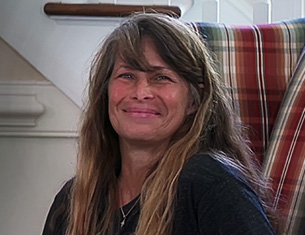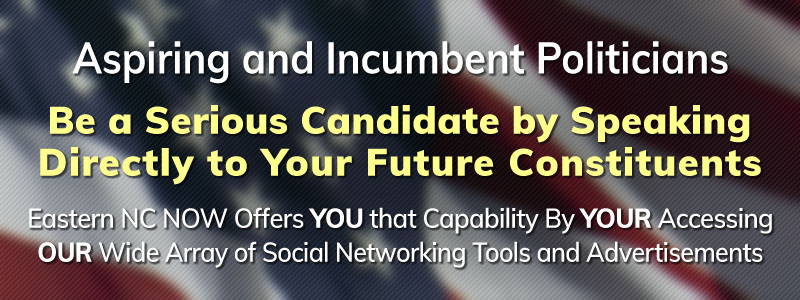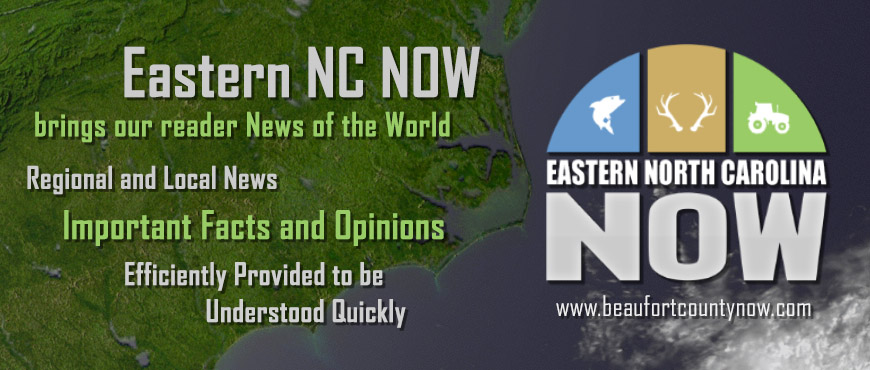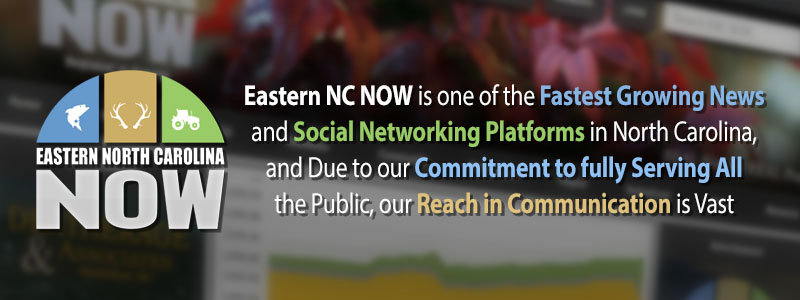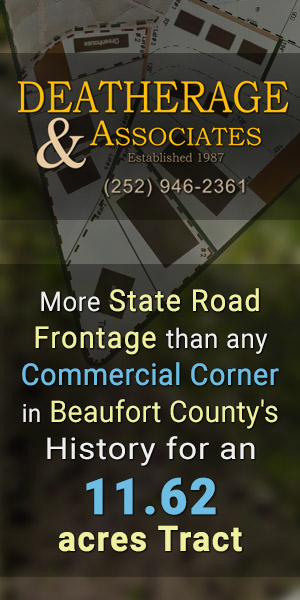The First Amendment Guarantees ALL Freedoms, including a Truthful Press
An Interview with the New NCCCS President
Martin Center: Some students start technical training or their academic studies while in high school through the Career and Technical Education or Career and College Promise pathways. What do you think is the future of dual enrollment?
Cox: This is an area that's really expanded over the last several years. With my background in K-12, it's near and dear to my heart-seeing countless examples of students who didn't think they were "college material," who ended up taking a dual-enrollment class with a college while they're in high school, and then they find out, "Oh, wow, I actually can do this work," and they get a couple of credits. Then they decide, "Well, I'm now five or six credits in here, to have some sort of degree or certificate or credential, maybe I will go to college." I've seen that happen many, many times. I think we're doing a better job now than we did 10 years ago, with helping students not just earn college credits, but be intentional about that, so that the credits the students are earning are pointed towards some kind of credential, or degree. They're not what I used to refer to as "random acts of college"-just taking a class here or there and you end up with a hodgepodge of different things that don't really point toward any specific degree or credential.
We've really streamlined things over the last six or eight years and are doing a much better job of making sure when students in high school are taking college courses, they're on a pathway that leads to some specific degree or credential. I see that program continuing. It works dynamically with the goal that myFutureNC has established, and that our whole state has kind of agreed upon, to have two million folks by 2030 with post-secondary credentials of value. If students can start earning the beginning of those and sometimes can even earn the whole credential before they graduate high school, that gives us a real leg up on that work.
Martin Center: The Comprehensive Articulation Agreement, which facilitates credit transfer between N.C. community colleges and public universities, has existed for a while now. Is there any work left to be done to ensure seamless transfer?
Cox: I think there is. I had a meeting already with State Superintendent [Catherine] Truitt, and I've got a meeting coming up with President Hans soon, as well as with Hope [Williams] with the independent colleges. I'm going to challenge my three colleagues, for the four of us to set up some routine meetings over the next year, to have this very conversation. We're doing a lot of good work, we've done a lot of good work to streamline and create this articulation. The articulation agreement we have in place currently is strong. But there are definitely places we can strengthen. I'll give you a quick example of this. When people think of our articulation agreement, I think a lot of the general public have in mind that that means you go two years to the community college and get your general education, and then go two more years and complete your degree at the university. And, unfortunately, that's rarely the way that it actually works.
First of all, on the community college side, a lot of students end up needing to take more than two years to complete the associate's degree, because maybe they were not quite as prepared as they needed to be to take their English credit courses right away, or their math credit courses right away. It may take three years to complete the first two. And then, unless the student knew when they started the community college exactly what they wanted to major in at the university, and which university they wanted to attend, when they finish at the community college, the courses they've taken may or may not line up exactly with the major that they're going to take at the university. Take a nursing student, for example, who goes through our program, and completes the two-year nursing degree with us. If they're going to transition that over to a university, the different universities may have slightly different prerequisites that they will want their nursing baccalaureate students to have. And if the students didn't take those specific courses back at their community college, then they're going to have some more electives at the university.
Often, what we think about as a two-plus-two agreement ends up being a two-plus-three agreement, or three-plus-three agreement. And that creates a barrier to success for our students. I think there's some work we can definitely do to help streamline things and make it even more effective. If you're a high-school student, or newly enrolled student, or even a community college student, you shouldn't have to know as soon as you begin what you're going to major in at the university and which university you're going to attend in order to have a chance of being able to complete within two years once you get to that university. There are all kinds of complications that come with this-with SACS accreditation issues at the university with program autonomy. If I'm the business school at the university and I want all of our business students to take this course at our university, we don't want to accept transfer credit. Should they have the autonomy to do that or not? Everyone has a different point of view about that. But I try to look at it through the student lens. I want the pathway to be as seamless and smooth for our students as it can be; graduate as many of them as we can with as little college debt as we can manage.
Martin Center: How does the system plan on keeping up with changes in the labor market? Do you think that there are any programs that should be dropped or added?
Cox: The system we have in place in North Carolina is sort of a decentralized model. We've got our system office and we provide support for the great 58 local colleges, but there's a fair amount of autonomy for the individual community colleges to base their programs on what the needs are of their specific regions. I'll give you an example: When I was at Wilkes Community College, we realized over time that the demand for our massage therapy program was beginning to wane. We had eventually graduated enough students that there wasn't really a market for our graduates anymore. There were several massage therapy clinics in town, and they were all staffed. There really wasn't any place for our students to go. Eventually, we made the decision to terminate that program because we didn't have the need. It is not that there wasn't any demand anywhere in North Carolina for massage therapists. But our local market was covered, and we didn't need to continue to offer that program. We closed it down.
At the same time, across any community in North Carolina, a brand new business could emerge and be created. Our community colleges have the flexibility to start up a program, particularly a short-term credential program, on a dime, with very little notice. They can be flexible and add a program as they need to. It's a little more complicated with curriculum programs; they take a little more planning and coordination. When you look across the great 58, I doubt there's a single year that goes by where there's not a program added and programs dropped across the different colleges. And it's different for every community.
Martin Center: The academic quality of community colleges in North Carolina is varied. We hear it from people at UNC who see transfers coming in and say, "Some of these students are great: They graduate at higher rates than our own students, but some of them have a long way to go to really be ready." What are the plans to improve academic quality so that it can be the best of what the community college system offers?
Cox: I think part of this gets to the core difference between the university system and our community college system. The community colleges are designed to develop talent. We're an open-access institution across the 58. Some elite universities brag about their very low acceptance rate. They're proud that they only take the top seven or eight percent of applicants. We brag that we take the top 100 percent of our applicants. If you apply, you get in. We take you from where you are, and help you to try to get to where you want to go with your own educational and career pathway. I would challenge the question a little bit to say that, in my opinion, if our students are making it through in completing those associate's degrees, I think the data is pretty clear that overall, they do as well or better than native students going straight to the university. I think sometimes our friends at the university get their native students, who may be struggling some, conflated with our transfer students, who generally do pretty well. I'm sure there are cases where students who graduated and [went] on had struggles academically.
One of the services that we provide to the university is taking that whole big group of students who come to us with all kinds of varied backgrounds-from being folks who dropped out of high school 25 years ago and now figured out they want to come back and get their high-school equivalency and go to college, to the brightest high-school graduates who are going to breeze through our community college and end up going on to Harvard one day-we truly see that whole broad range of students. But one of the services that we provide for the universities is we work with those students and help them become better students so that if they complete that associate's degree, there's a higher likelihood of success for them when they transfer on to the university. If we can figure out the nonacademic barriers that are in the way of our students, particularly around economics, and how to make it affordable for them to go on and thrive at the university, the academics usually fall into place pretty well.
Martin Center: Is there anything else that you would like to share with our readers?
Cox: The only other thing I want to share is we're going through a whole process here over the next year with the new administration that I have, and working with the state board, to really listen to all of our different stakeholder groups: business, industry, our education partners, our 58 individual institutions out there across the state, to step back and reimagine, where do we want to be in 10 years? What changes do we want to see happen to our community college system over the next 10 years? And then how do we get there? If we want to be the number-one workforce provider in the country, to match up with being the number-one state in the country for business, what does that look like? What does it take to be able to produce the very best, most talented workforce in the country? And then from that, thinking about our funding formula, and how we're funded. And how's that preparing us to be as agile as we can be to meet the needs of all of our citizens, and all of our business and industry? That's what we're looking forward to doing going forward.
Shannon Watkins is the research associate at the James G. Martin Center for Academic Renewal.
Go Back
Cox: This is an area that's really expanded over the last several years. With my background in K-12, it's near and dear to my heart-seeing countless examples of students who didn't think they were "college material," who ended up taking a dual-enrollment class with a college while they're in high school, and then they find out, "Oh, wow, I actually can do this work," and they get a couple of credits. Then they decide, "Well, I'm now five or six credits in here, to have some sort of degree or certificate or credential, maybe I will go to college." I've seen that happen many, many times. I think we're doing a better job now than we did 10 years ago, with helping students not just earn college credits, but be intentional about that, so that the credits the students are earning are pointed towards some kind of credential, or degree. They're not what I used to refer to as "random acts of college"-just taking a class here or there and you end up with a hodgepodge of different things that don't really point toward any specific degree or credential.
We've really streamlined things over the last six or eight years and are doing a much better job of making sure when students in high school are taking college courses, they're on a pathway that leads to some specific degree or credential. I see that program continuing. It works dynamically with the goal that myFutureNC has established, and that our whole state has kind of agreed upon, to have two million folks by 2030 with post-secondary credentials of value. If students can start earning the beginning of those and sometimes can even earn the whole credential before they graduate high school, that gives us a real leg up on that work.
Martin Center: The Comprehensive Articulation Agreement, which facilitates credit transfer between N.C. community colleges and public universities, has existed for a while now. Is there any work left to be done to ensure seamless transfer?
Cox: I think there is. I had a meeting already with State Superintendent [Catherine] Truitt, and I've got a meeting coming up with President Hans soon, as well as with Hope [Williams] with the independent colleges. I'm going to challenge my three colleagues, for the four of us to set up some routine meetings over the next year, to have this very conversation. We're doing a lot of good work, we've done a lot of good work to streamline and create this articulation. The articulation agreement we have in place currently is strong. But there are definitely places we can strengthen. I'll give you a quick example of this. When people think of our articulation agreement, I think a lot of the general public have in mind that that means you go two years to the community college and get your general education, and then go two more years and complete your degree at the university. And, unfortunately, that's rarely the way that it actually works.
First of all, on the community college side, a lot of students end up needing to take more than two years to complete the associate's degree, because maybe they were not quite as prepared as they needed to be to take their English credit courses right away, or their math credit courses right away. It may take three years to complete the first two. And then, unless the student knew when they started the community college exactly what they wanted to major in at the university, and which university they wanted to attend, when they finish at the community college, the courses they've taken may or may not line up exactly with the major that they're going to take at the university. Take a nursing student, for example, who goes through our program, and completes the two-year nursing degree with us. If they're going to transition that over to a university, the different universities may have slightly different prerequisites that they will want their nursing baccalaureate students to have. And if the students didn't take those specific courses back at their community college, then they're going to have some more electives at the university.
Often, what we think about as a two-plus-two agreement ends up being a two-plus-three agreement, or three-plus-three agreement. And that creates a barrier to success for our students. I think there's some work we can definitely do to help streamline things and make it even more effective. If you're a high-school student, or newly enrolled student, or even a community college student, you shouldn't have to know as soon as you begin what you're going to major in at the university and which university you're going to attend in order to have a chance of being able to complete within two years once you get to that university. There are all kinds of complications that come with this-with SACS accreditation issues at the university with program autonomy. If I'm the business school at the university and I want all of our business students to take this course at our university, we don't want to accept transfer credit. Should they have the autonomy to do that or not? Everyone has a different point of view about that. But I try to look at it through the student lens. I want the pathway to be as seamless and smooth for our students as it can be; graduate as many of them as we can with as little college debt as we can manage.
Martin Center: How does the system plan on keeping up with changes in the labor market? Do you think that there are any programs that should be dropped or added?
Cox: The system we have in place in North Carolina is sort of a decentralized model. We've got our system office and we provide support for the great 58 local colleges, but there's a fair amount of autonomy for the individual community colleges to base their programs on what the needs are of their specific regions. I'll give you an example: When I was at Wilkes Community College, we realized over time that the demand for our massage therapy program was beginning to wane. We had eventually graduated enough students that there wasn't really a market for our graduates anymore. There were several massage therapy clinics in town, and they were all staffed. There really wasn't any place for our students to go. Eventually, we made the decision to terminate that program because we didn't have the need. It is not that there wasn't any demand anywhere in North Carolina for massage therapists. But our local market was covered, and we didn't need to continue to offer that program. We closed it down.
At the same time, across any community in North Carolina, a brand new business could emerge and be created. Our community colleges have the flexibility to start up a program, particularly a short-term credential program, on a dime, with very little notice. They can be flexible and add a program as they need to. It's a little more complicated with curriculum programs; they take a little more planning and coordination. When you look across the great 58, I doubt there's a single year that goes by where there's not a program added and programs dropped across the different colleges. And it's different for every community.
Martin Center: The academic quality of community colleges in North Carolina is varied. We hear it from people at UNC who see transfers coming in and say, "Some of these students are great: They graduate at higher rates than our own students, but some of them have a long way to go to really be ready." What are the plans to improve academic quality so that it can be the best of what the community college system offers?
Cox: I think part of this gets to the core difference between the university system and our community college system. The community colleges are designed to develop talent. We're an open-access institution across the 58. Some elite universities brag about their very low acceptance rate. They're proud that they only take the top seven or eight percent of applicants. We brag that we take the top 100 percent of our applicants. If you apply, you get in. We take you from where you are, and help you to try to get to where you want to go with your own educational and career pathway. I would challenge the question a little bit to say that, in my opinion, if our students are making it through in completing those associate's degrees, I think the data is pretty clear that overall, they do as well or better than native students going straight to the university. I think sometimes our friends at the university get their native students, who may be struggling some, conflated with our transfer students, who generally do pretty well. I'm sure there are cases where students who graduated and [went] on had struggles academically.
One of the services that we provide to the university is taking that whole big group of students who come to us with all kinds of varied backgrounds-from being folks who dropped out of high school 25 years ago and now figured out they want to come back and get their high-school equivalency and go to college, to the brightest high-school graduates who are going to breeze through our community college and end up going on to Harvard one day-we truly see that whole broad range of students. But one of the services that we provide for the universities is we work with those students and help them become better students so that if they complete that associate's degree, there's a higher likelihood of success for them when they transfer on to the university. If we can figure out the nonacademic barriers that are in the way of our students, particularly around economics, and how to make it affordable for them to go on and thrive at the university, the academics usually fall into place pretty well.
Martin Center: Is there anything else that you would like to share with our readers?
Cox: The only other thing I want to share is we're going through a whole process here over the next year with the new administration that I have, and working with the state board, to really listen to all of our different stakeholder groups: business, industry, our education partners, our 58 individual institutions out there across the state, to step back and reimagine, where do we want to be in 10 years? What changes do we want to see happen to our community college system over the next 10 years? And then how do we get there? If we want to be the number-one workforce provider in the country, to match up with being the number-one state in the country for business, what does that look like? What does it take to be able to produce the very best, most talented workforce in the country? And then from that, thinking about our funding formula, and how we're funded. And how's that preparing us to be as agile as we can be to meet the needs of all of our citizens, and all of our business and industry? That's what we're looking forward to doing going forward.
Shannon Watkins is the research associate at the James G. Martin Center for Academic Renewal.




